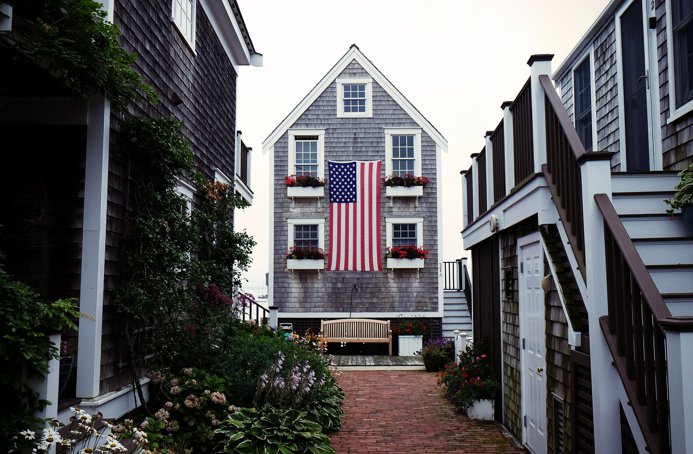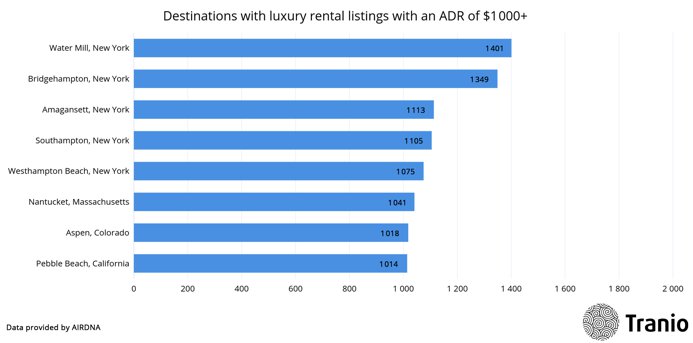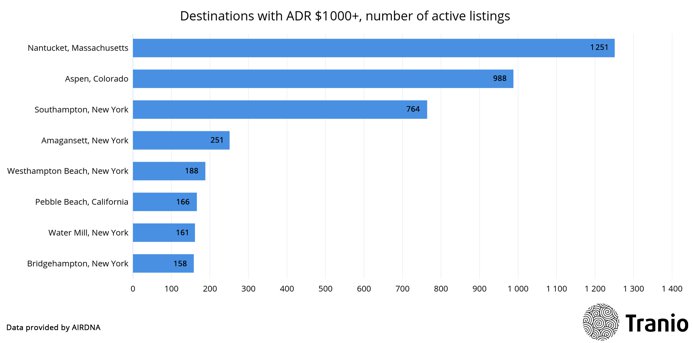Why is the short-term luxury rental market so hot?

People are embarking on more short-term travel holidays — aka luxury micro trips — than ever before, and the short-term luxury residential property rental market is booming as a result. Airbnb, never one to miss a trick, has launched the Airbnb Luxe platform, which offers thousands of hi-spec luxury apartments in classy areas from $1,000 a night to cater for this growing market. Tranio explains why there are so many people willing to splash the big bucks on short trips.
Demand for short-term luxury rentals in the US growing
The global luxury travel market capacity has reached a staggering $201 billion, and this figure is only getting bigger – the annual average market growth rate is expected to be about 6.7% over the next three years (Luxury Travel Market, 2019).
Over the course of 2019, micro trips (lasting only a few days) are now a stand out trend in the luxury travel market thanks to better transport networks. more short haul flights and things like car sharing.
This year, Airbnb’s new Luxe platform listed around 3,000 properties, each of which had been inspected using over 300 quality criteria. Of these upmarket homes, 47% are located in the US, which is no surprise given that the country accounted for 32.9% of the luxury travel market in 2017. According to the experts from Grand View Research, the US occupies 85.5% of the North American continent’s luxury travel market, and is therefore one of the world leaders in the industry (Luxury Travel Market Size, Share & Trends Analysis Report, 2019).
According to the World Travel & Tourism Council, in 2018, tourism contributed $1.6 trillion to the GDP of the US – that’s 7.8% of the country’s total. As reported by the U.S. Travel Association, the aggregate spending by local and international tourists in the country ran at over $1 billion in the same year. The aggregate spending by local and international tourists in the US luxury travel segment ran at about $60 billion, accounting for 5.5% of the entire national tourism industry at the end of 2018.
According to AirDNA, five of the eight existing locations with an Average Daily Rate (ADR) starting from $1,000 in the US market are in New York state. Five of them are located in the Hamptons.
The Hamptons is the leader when it comes to the ADR among all US locations – the area is known as the “Côte d'Azur of the US.” Rich New Yorkers tend to buy summer houses there, where prices can reach $150 million for a single residence. According to Barrons, the median price for homes in Q2 was $850,000, 4% lower than the previous year.
Elliman's Q1 and Q2 2019 reports show that in H1 2019, property sales in the Hamptons were 9% lower than during the same period of 2018 (Elliman report Hamptons sales Q1 2019, Q2 2019). Barrons associates the decline in sales with the restriction on tax deductions related to property purchases. However, according to forecasts, the demand will recover.

Nantucket, Massachusetts leads the way when it comes to properties with an ADR exceeding $1000 per night, with over 1,200 luxury rental offers.
The higher the ADR, the lower the competition among the property owners wishing to lease their homes. This is demonstrated by data from AirDNA showing that the number of rental offers falls drastically as the ADR grows.

The luxury travel market is growing, so too the number of HNWIs
The US luxury travel market has been developing thanks to the rising number of HNWIs (High Net Worth Individuals) and UHNWIs (Ultra High Net Worth Individuals). In 2018, there were 22.4 million HNWIs (40% of the world’s share) holding over $1 million in assets – the US has more HNWIs than any other country.
The US also tops the charts in the number of UHNWIs holding over $30 million in assets. According to Wealth-X, 79,600 such individuals (more than 30% of the world's total UHNWIs) was living in the US by 2018.
The number of HNWIs in the world has been growing for the last few years. In 2018, the figure rose by 1.9% compared to 2017, while in 2017, the number of US HWHIs grew by 12.9% against 2016.
According to estimates by Wealth-X, the number of HWNIs in North America will continue to grow, increasing by another 5.9% by 2023. Knight Frank also expects the number of UHNWIs to balloon by 18% over the next five years (The Wealth Report, 2019).
Obviously, with the growing numbers of HNWIs and UHNWIs in the US and all over the world, luxury travel will also develop, so too the short-term luxury residential property rental market.
We will send you a content digest not more than once a week